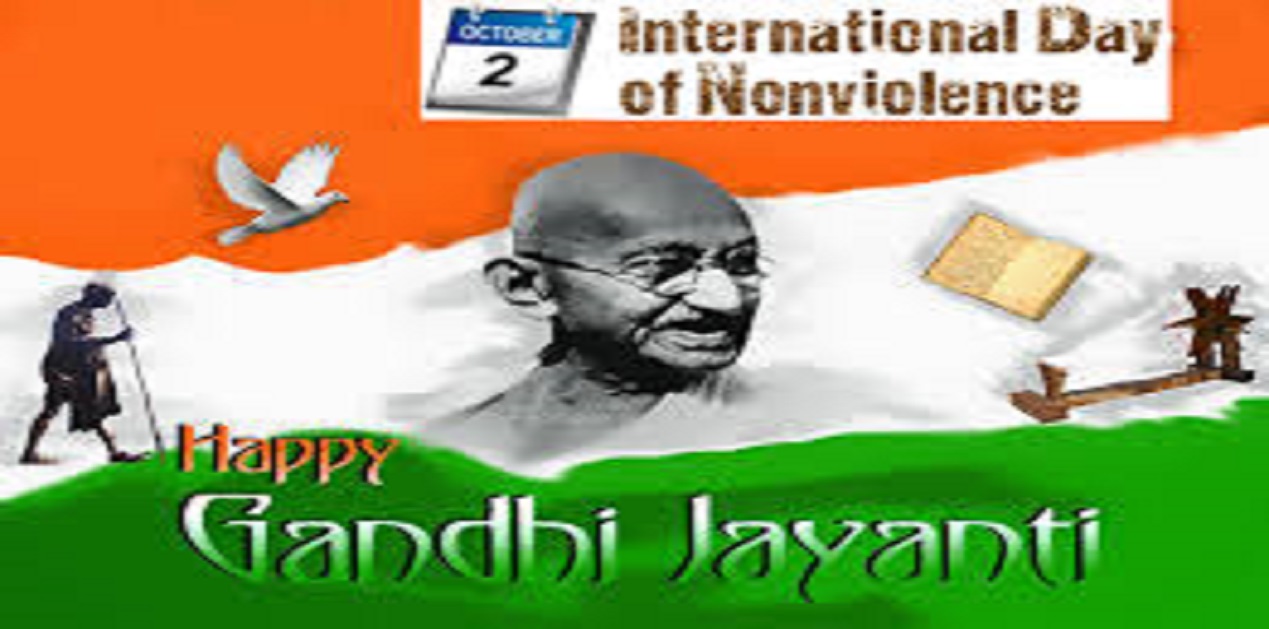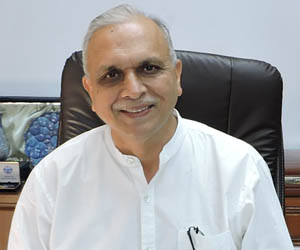Gandhi was born on 2 October 1869. It is remarkable that even after 150 years people read and study Gandhi in the hope that they will find answers to contemporary problems. This is testimony to the universalism of Gandhi’s ideas.
On Gandhi Jayanti, we should reflect on the state of the world and the relevance of Gandhian ideals. Can, the core of Gandhian philosophy, truth and nonviolence, make the world more peaceful, safer and happier?
There is an acute feeling that despite the enormous material progress, the world is missing something sorely. The exponential increase of wealth in the world has not brought the feeling of wellness, fulfilment and happiness. Income inequality has sharpened. Poverty, hunger, disease, violence continue to plague the world. Climate change presents an existential threat to mankind. Coronavirus has created enormous political, economic, social and psychological uncertainties. Violence continues unabated.
Still, there is some faith in Gandhian ideals, no matter how utopian they may sound. Following a UN General Assembly resolution, the world has been celebrating October 2 as the international day of nonviolence since 2007. In 2019, on the occasion of the 150th birth anniversary of Mahatma Gandhi, the UN Secretary-General observed that Gandhi’s teachings inform the core agenda of the UN i. e. development, peace and cooperation. The Gandhian ideal of Sarvodaya foreshadowed the UN’s flagship programme “Agenda 2030” which is based on the thought of leaving no one behind.
Gandhi’s’ character was vast. The sphere of his activities was extremely wide, ranging from politics to women and religion. He has been seen as a reformer, a satyagrahi, a fighter, a preacher, a moralist, a learner, a yogi, a great soul, a champion of the rights of the last man, an advocate of a decentralised economy, a seeker of truth, and much more.
Although his main activities were in the context of fighting racial injustice in South Africa and the freedom movement agist the British in India, he became a global icon in his lifetime. Today he inspires protest movements of all kinds all over the world. Many People are adapting Gandhian ideas to their circumstances and needs. Martin Luther King Jr, Nelson Mandela, Ho Chi Minh, Khan AndulGaffar Khan, to name a few, were inspired by Gandhi's nonviolent methods of protest. Climate change activists, champions of environmental and ecology are also invoking Gandhi for their own purposes. His works have been translated into many languages of the world. Hundreds of books had been written on his life and work. He continues to inspire myriads of causes in diverse settings. More than 100 countries have come out with postage stamps on Gandhi.
To fully grasp Gandhi one must see him beyond politics and focus on his spiritual message. For him, spiritualism could not be separated from politics or any other sphere of life.
Gandhi’s economic thought is unorthodox. In the advocacy of Khadi, he was sending a message that each individual must be productive. In the advocacy of village economy, he was stressing the benefits of decentralised production. In advocating trusteeship, he was highlighting the truth that the wealth earned is merely held in custody for future generations. These are revolutionary ideas which in today’s day and age seem difficult to implement. Yet, they have a strong moral and practical logic. At a time when the world is wracked by migrations, unplanned urbanisation, his message of decentralised production and making the village as a unit of production is relevant.
He was opposed to the kind of education which detached one of from one’s roots. He also opposed technology and machines which enslaved humans. Technology, which brings exploitation needs to be discarded. Technology which dehumanises must be shunned. He was not against modernization per se but its exploitative nature.
Gandhi is not a pacifist. He would rather prefer violence to cowardice. He would give a strong fight to oppression and exploitation. But the means would be nonviolent. Nonviolence is not timidity or cowardice. Nonviolence requires moral courage and inner strength of character. Nonviolence is a powerful force. Non-violent Satyagraha is the method.
Gandhi pointed out three possible responses to oppression and injustice. One he described as the coward's way: to accept the wrong or run away from it. The second option was to stand and fight by force of arms. Gandhi said this was better than acceptance or running away. But the third way, he said, was best of all and required the most courage to stand and fight solely by non-violent means.
He distilled these concepts from ancient Indian teachings of Hinduism, Buddhism and Jainism and even from the New Testament, Tolstoy, Russeau, Arnold and Thoreau. He did not stop there. He gave them an intensely practical interpretation. Not satisfied with bookish knowledge, he learnt from his experiences. He developed tools and instruments, rooted in truth and nonviolence, that would be used for practical purposes such as fighting oppression, mobilisation, protest and transformation.
He culled out universal truths from his experiences and experiments. Nonviolent non-cooperation, based upon the force of morality has become a common tool with the protesters. Nonviolent protests have a moral force which is lost once protests become violent. This lesson has been learned by protesters the world over.
The most important feature of Gandhiji's was that he stood with the last man. Another important aspect was that he became the change himself. He preached what he believed in and what he did himself. This gave him a tremendous moral force which the opponents could not ignore. To his last breath, he was trying to change something. Not by force, not by diktat, but by moral force based on truth and nonviolence.
For Gandhi, spirituality, morality, politics and economics were inseparable. The artificial separation of religion from politics created the problem. Religion is to be understood not in terms of rituals but in terms of the concept of ethics, love and service, duty and responsibility.
Gandhi was intensely nationalistic but his nationalism was both exclusive and inclusive. His nationalism would not be antagonistic to anybody else’s nationalism.
For Gandhi, Swaraj without swadeshi is unthinkable. He felt that the departure from swadeshi in economic and industrial life proved to be ruinous for India. Similarly, being educated in a foreign language and foreign ideas separated the people from the masses. Adopting somebody else’s religion also lead to moral degradation. We need to reflect on these ideas when we are rediscovering self-reliance and Atmanirbharata. Apart from anything else, it is the Swaraj and ideas that required today to help us find our way through the turbulent world. But he warned against making swadeshi a fetish. To boycott something because it was a foreign origin and listing time and effort on something that was not suited to the soil was also criminal. For him, swadeshi was rooted in ahimsa, love and the doctrine of selfless service.
The strongest Gandhian message is that every action should be moral. Means are more important than the ends. He was deeply influenced by the message of the Bhagavad Gita. From the Bhagavad Gita, he took the message of nonattachment or anasakti. But he was firmly rooted in Indian thinking.
Gandhi's core teaching was truth and nonviolence. One cannot understand Gandhi without understanding truth and nonviolence. These ideas spring from Indian thought and philosophy. They need to be properly understood and contextualised. We respect Gandhi because he was able to evolve a practical philosophy based on these ideas. Most people relate to these ideas but find it difficult to follow them in practice. Gandhi remains relevant today. That is why we continue to remember him even though we may not be able to follow him.
(The paper is the author’s individual scholastic articulation. The author certifies that the article/paper is original in content, unpublished and it has not been submitted for publication/web upload elsewhere, and that the facts and figures quoted are duly referenced, as needed, and are believed to be correct). (The paper does not necessarily represent the organisational stance... More >>
Image Source: https://www.lovevivah.com/matrimony/blog/wp-content/uploads/2015/12/Mahatma-Gandhi-Jayanti-2nd-October-International-Day-of-Non-Violence.jpg











Post new comment